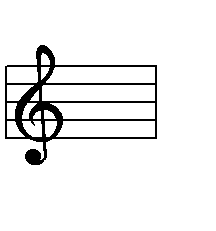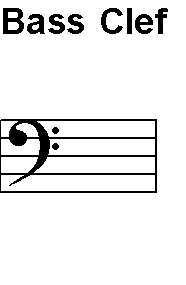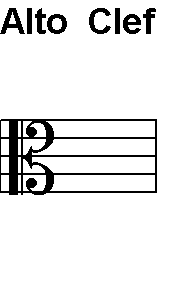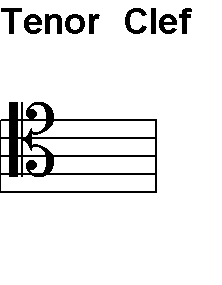The mnemonic for this is: Every Good Boy Does Fine
(or from the Moody Blues album Every Good Boy Deserves Favour).


But if you learn to read melody lines, then you’ll be able to figure out songs from piano books and other sources such as perusing songbooks in music stores when you don’t want to pay $20 for a book with only one song in it you’re interested in learning.
You probably already know some of this.
|
The 5 lines on the music staff read, from the bottom: E G B D F. The mnemonic for this is: Every Good Boy Does Fine (or from the Moody Blues album Every Good Boy Deserves Favour). |

|
| The spaces, reading from the bottom up, spell the word: F A C E. |

|
A treble clef looks like this:

There are a lot of other kinds of clefs. They each indicate that the notes are named differently.



Don’t worry about those. Just focus on memorizing the notes of the treble staff.